It’s a fine line between creativity and controversy, and not all covers make the cut.
Album art provides a visual entry into a musician’s work, serving both as a marketing tool and a form of artistic expression.
These covers don’t just shape how listeners view the album’s music. Iconic covers reflect the spirit of an era or an artist’s vision, while controversial ones provoke public debate and challenge norms.
In this article, we list 20 of the most fascinating, impactful, and controversial album covers. Read on as we detail the stories behind their creation, the artists involved, and their overall impact on music, art, and society.
- 1. The Beatles - Abbey Road
- 2. Pink Floyd - Wish You Were Here
- 3. Nirvana - Nevermind
- 4. Chumbawamba – Anarchy
- 5. Lauryn Hill - The Miseducation of Lauryn Hill
- 6. John Lennon & Yoko Ono – Unfinished Music No. 1: Two Virgins
- 7. Slayer – Christ Illusion
- 8. Tenacious D – Tenacious D
- 9. Matchbox Twenty – Yourself or Someone Like You
- 10. Sufjan Stevens – Illinoise
- 11. The Beatles – Yesterday and Today
- 12. Nas - Illmatic
- 13. Rihanna - Anti
- 14. BTS - Map of the Soul: 7
- 15. The Roots - Things Fall Apart
- 16. Michael Jackson - HIStory: Past, Present and Future, Book I
- 17. Iron Maiden - Running Free
- 18. Pink Floyd - The Dark Side of the Moon
- 19. David Bowie - Aladdin Sane
- 20. Taylor Swift - 1989
- 1. The Beatles - Abbey Road
- 2. Pink Floyd - Wish You Were Here
- 3. Nirvana - Nevermind
- 4. Chumbawamba – Anarchy
- 5. Lauryn Hill - The Miseducation of Lauryn Hill
- 6. John Lennon & Yoko Ono – Unfinished Music No. 1: Two Virgins
- 7. Slayer – Christ Illusion
- 8. Tenacious D – Tenacious D
- 9. Matchbox Twenty – Yourself or Someone Like You
- 10. Sufjan Stevens – Illinoise
- 11. The Beatles – Yesterday and Today
- 12. Nas - Illmatic
- 13. Rihanna - Anti
- 14. BTS - Map of the Soul: 7
- 15. The Roots - Things Fall Apart
- 16. Michael Jackson - HIStory: Past, Present and Future, Book I
- 17. Iron Maiden - Running Free
- 18. Pink Floyd - The Dark Side of the Moon
- 19. David Bowie - Aladdin Sane
- 20. Taylor Swift - 1989
1. The Beatles – Abbey Road
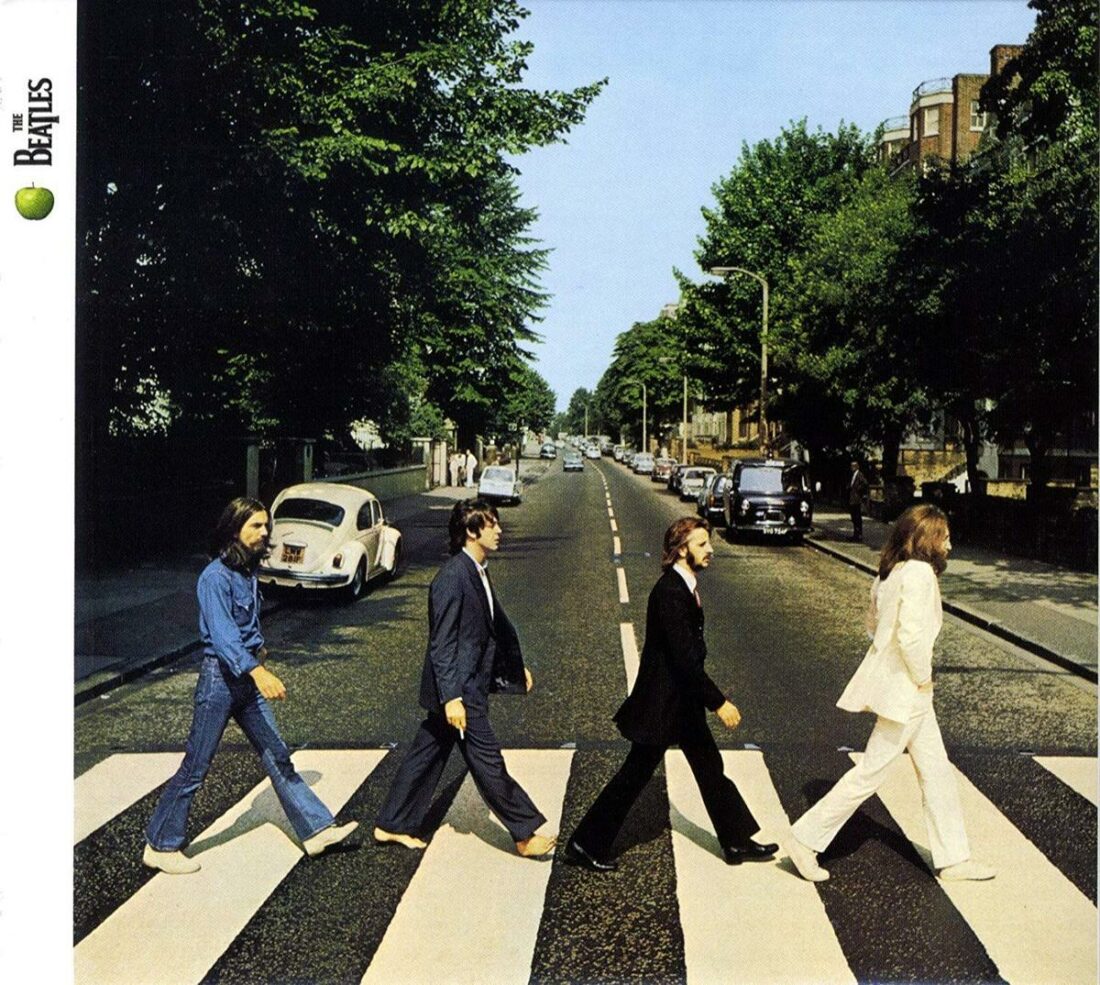
The iconic “Abbey Road” album cover features The Beatles crossing the street outside their London recording studio in August 1969.
But what makes this album cover unique is that it doesn’t have both the band’s name and album title.
This was a bold decision made by Apple Records’ creative director, Kosh. According to him, the band was the most famous in the world and didn’t need such identification. So, they pushed through with the idea despite the resistance from the record label EMI.
Kosh’s stance was proven true, however, as the album now has around 27 million copies sold worldwide. This legendary crosswalk also still draws Beatles fans worldwide and even got a Grade II listing in 2010 for its cultural importance.
2. Pink Floyd – Wish You Were Here
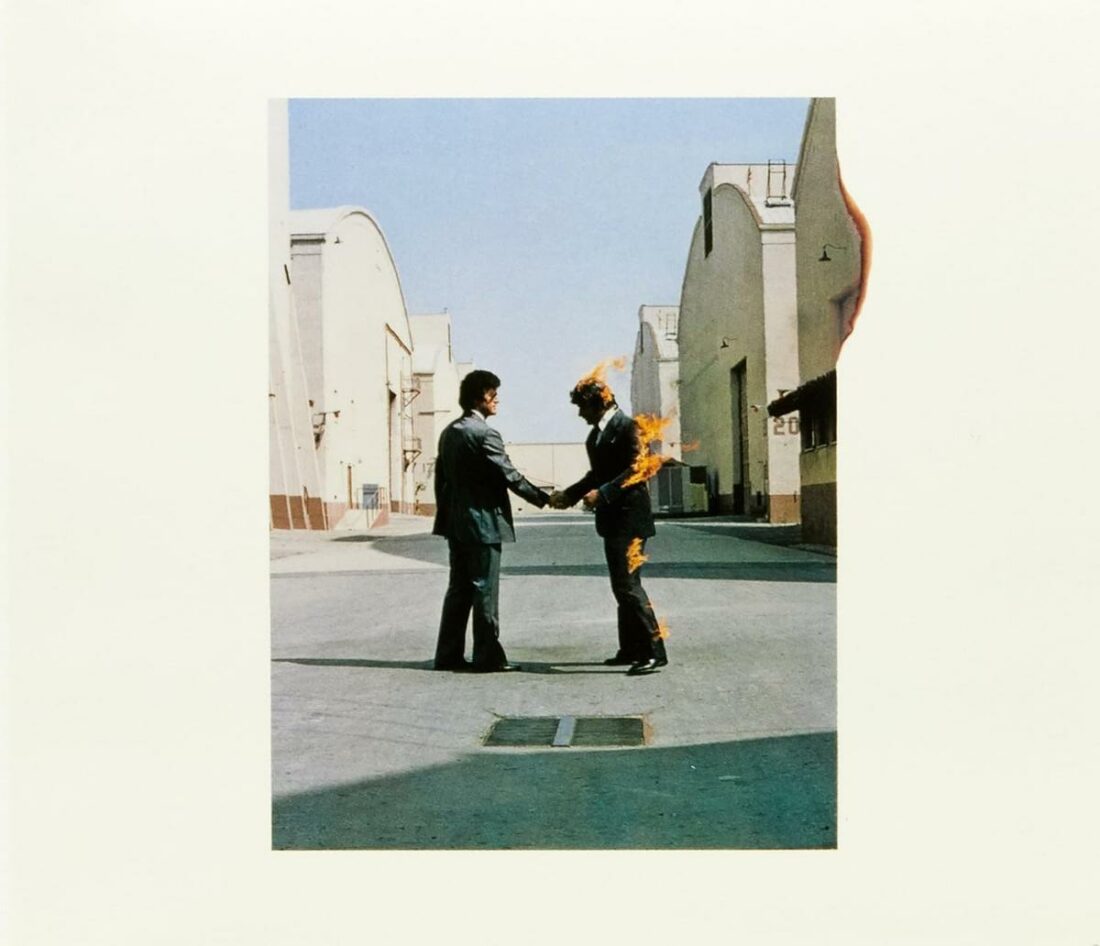
This album cover cleverly shows the theme of absence and emotional disconnection.
Designed by Hipgnosis, it pictures two businessmen shaking hands, with one engulfed in flames. This represents suppressed emotions and the hollowness that often accompanies routine interactions, reflecting the themes of alienation expressed in the lyrics.
3. Nirvana – Nevermind

The famous image of a baby chasing a dollar represents a profound commentary on consumer culture. This idea was brought up by Kurt Cobain after he watched a documentary on water births. Then, it was skillfully brought to life by photographer Kirk Weddle.
At first, the band faced a high cost for using stock images of a baby underwater. As such, they chose to have a photoshoot with the baby, Spencer Elden, in a swimming pool instead.
As expected, a lot of controversy arose over the visible infant nudity. Because of this, Geffen had prepared an alternate covered version. Yet, Cobain insisted on keeping the original, allowing a “censored” sticker if needed.
4. Chumbawamba – Anarchy

If you think Nirvana’s naked baby is something, you’d be surprised by the next.
Embodying the anarchic spirit, this album cover shows a graphic image of childbirth. This embodies Chumbawamba’s rebellious spirit. It aims to challenge norms and censorship by presenting a raw, unfiltered image of birth.
Getting backlash right after it’s released isn’t exactly surprising. Some stores banned it outright, while others sold it discreetly in plain sleeves.
5. Lauryn Hill – The Miseducation of Lauryn Hill
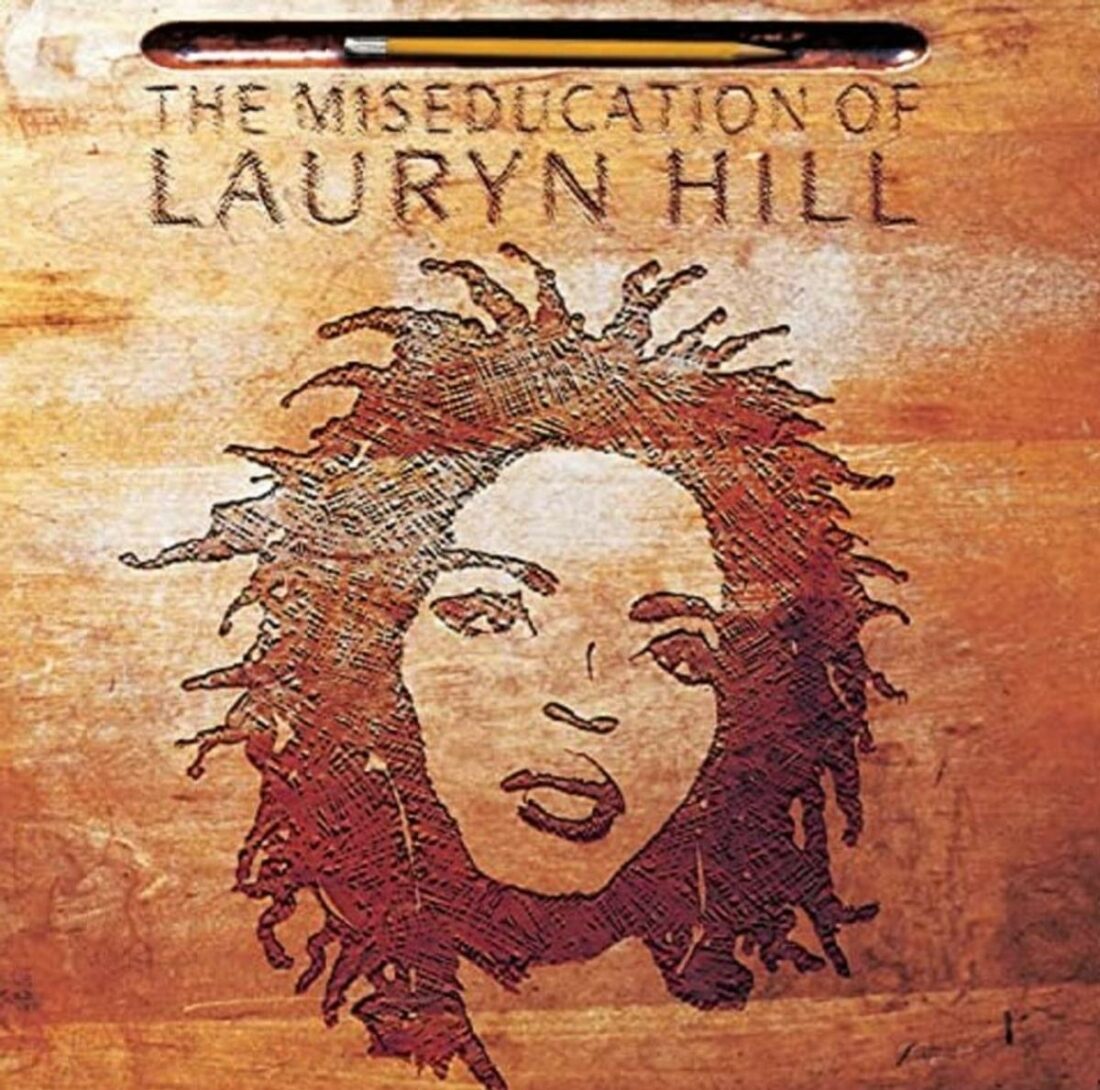
Deeply inspired by the album’s themes, Hill personally thought of etching her face into a school desk for the cover. According to her, this is done to educate and enlighten listeners, echoing the album’s themes of life’s lessons and personal growth.
To make it even more symbolic, the photographer, Eric Johnson captured the image at Hill’s alma mater.
6. John Lennon & Yoko Ono – Unfinished Music No. 1: Two Virgins

John Lennon and Yoko Ono’s cover for “Two Virgins” featured nude photos of both artists. This made it controversial, leading to its sale in a plain brown wrapper.
This cover was a bold declaration of artistic and personal freedom from two of the most debated figures in music history. It also reflected their avant-garde approach to art.
7. Slayer – Christ Illusion

The cover for Slayer’s “Christ Illusion” was painted by Larry Carroll. It featured a sacrilegious depiction of a tattooed amputee Jesus, wading in a sea of blood. Designed to provoke and confront, this artwork basically suited Slayer’s anti-religious themes.
Controversy naturally followed, resulting in an alternative cover for markets that required a more cautious approach.
8. Tenacious D – Tenacious D

In keeping with their over-the-top personas, Jack Black and Kyle Gass posed audaciously nude with a devilish figure looming above for Tenacious D‘s self-titled debut album.
The band is known for its flair for theatrical and satirical performances.
However, some say this art was a direct homage to the Devil tarot card. So, due to its explicit satanic themes, the album was briefly recalled from stores.
9. Matchbox Twenty – Yourself or Someone Like You

The cover of Matchbox Twenty’s “Yourself or Someone Like You” features Frank Torres, who was mistakenly thought to be a homeless man. The cover became the subject of a lawsuit when Torres claimed his image was used without his permission.
He claimed he was merely a passerby and not a paid model. Yet, the band maintained that he was a paid extra whose unexpected presence made a significant impact.
The lawsuit opened public discourse over the rights of individuals in artistic representations.
10. Sufjan Stevens – Illinoise

Divya Srinivasan‘s artwork for “Illionoise” honors Illinois’ heritage with illustrations of iconic figures and landmarks. These include Abraham and Mary Todd Lincoln, the Sears Tower, and Black Hawk.
Stevens’ commitment to the theme is evident not just in the graphics but also in the title’s playful misspelling. This detailed approach, rewarded with a 2006 packaging award, personifies the album’s reverence for its subject.
The inclusion of Superman, however, prompted legal threats from DC Comics. This led to a halt in sales or a need for redesigning the cover.
Because of this, the original artwork became a collector’s item. It’s now sought after for its rarity and the cultural controversy it represents.
11. The Beatles – Yesterday and Today
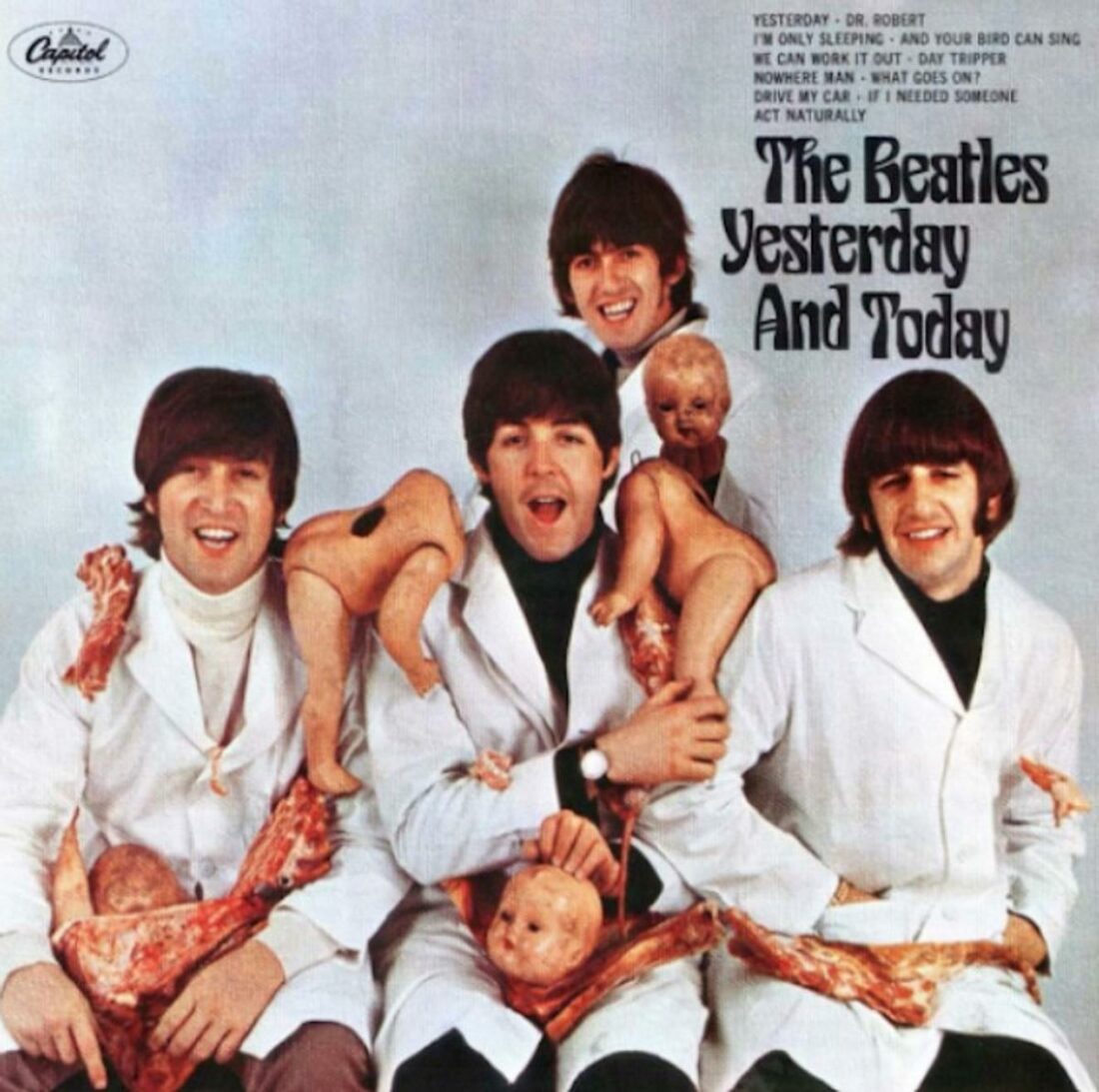
This album from The Beatles is famously known as the “butcher cover.” Originally, it showcased the band members dressed in white lab coats, surrounded by pieces of meat and baby dolls.
It served as a strong critique of the handling of records in the U.S. market. But, since the image was so unsettling, it was removed from store shelves and replaced. Consequently, it became a sought-after collector’s item.
12. Nas – Illmatic
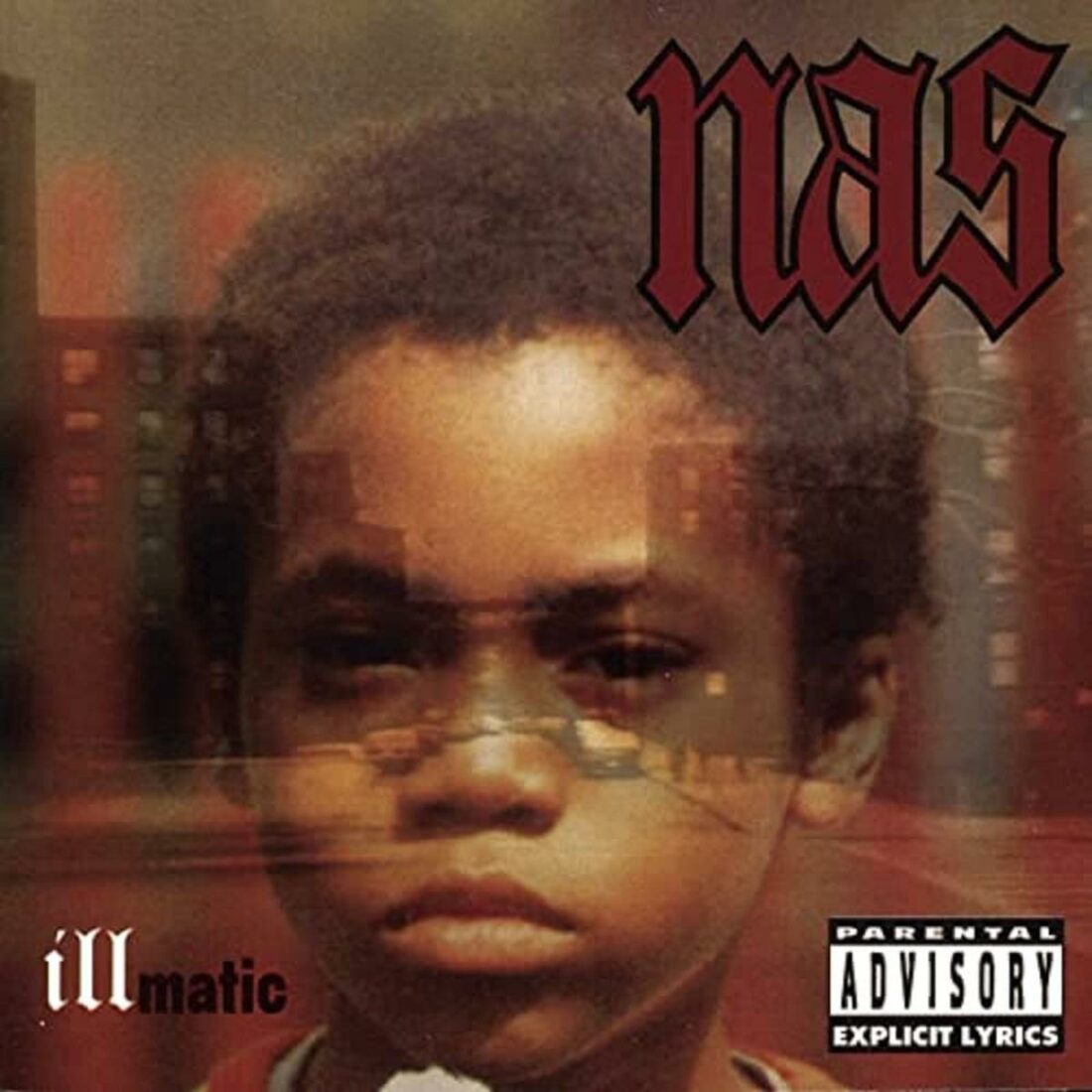
The cover of “Illmatic” is a deeply symbolic portrait that blends a photo of a seven-year-old Nas with a backdrop of New York City’s Queensbridge housing projects. It emphasizes his lyrical connection to his upbringing.
Nas considered a provocative concept featuring him holding Jesus Christ in a headlock, reflecting his bold lyricism. However, the final choice prioritizes Nas’s roots and the raw, authentic narrative defining the album. This serves as a powerful visual echo of his impactful debut.
13. Rihanna – Anti
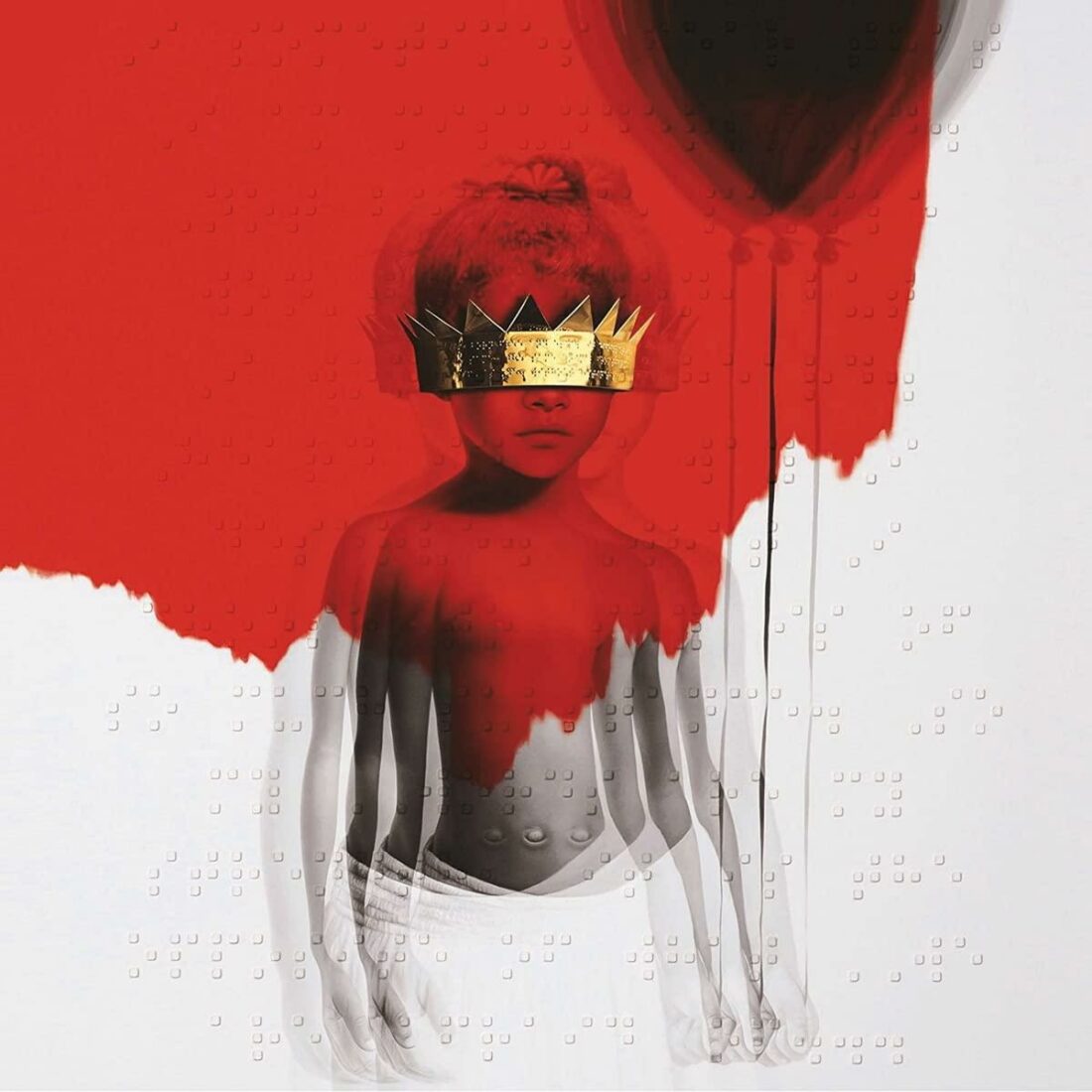
Striking a fitting tone of subversion, Anti’s cover presents a childlike Rihanna obscured by a golden crown. A Braille poem adds metaphorical depth, hinting at a deeper awareness that transcends mere looks.
This striking visual metaphor, designed by artist Roy Nachum, symbolizes the blindness of those who see but do not perceive. This aligns with the album’s themes of self-awareness and redefinition.
14. BTS – Map of the Soul: 7

The cover for BTS‘s “Map of the Soul: 7” is a deeply symbolic representation of the group’s journey over seven years. Designed by the graphic studio Sparks Edition, the cover features a complex ‘7’ logo that seems like an overlay of multiple styles.
Each iteration of the number is styled uniquely to represent the unique identity and personality of each of the seven members. It shows how each member’s experiences and contributions come together to create a cohesive whole.
15. The Roots – Things Fall Apart
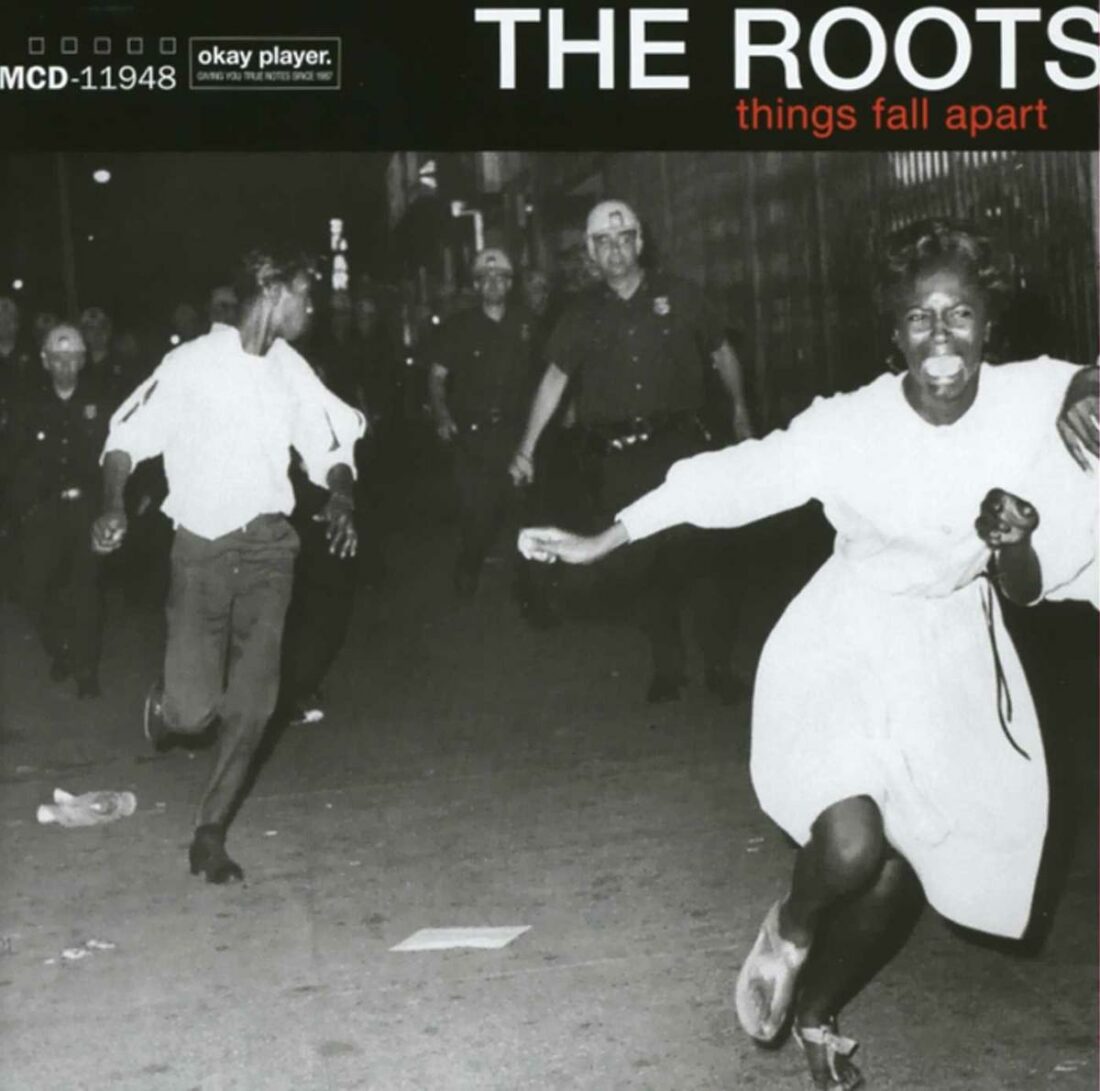
In Miles’ record of legendary album covers, this particular image powerfully represents the turmoil of America’s civil rights movement. The sharp black-and-white depiction of riot police confronting Black youths in 1960s Brooklyn matches the album’s sharp social critique effectively.
The cover not only deepens the album’s exploration of socio-political issues but also stands as a vivid reminder of the continuous fight for racial equality.
16. Michael Jackson – HIStory: Past, Present and Future, Book I

Michael Jackson had ambitions to be immortalized like a towering statue. This sort of came into reality through Diana Walczak‘s pioneering CGI work on the HIStory cover.
But the technology they had back then wasn’t as advanced as what we have now.
So, Walczak had to sculpt over 300 pounds of clay based on reference shots Jackson took while wearing makeup against advice. Then, she digitized and transformed the piece into an imposing monument showcasing Jackson’s self-perception as an eternal icon.
17. Iron Maiden – Running Free
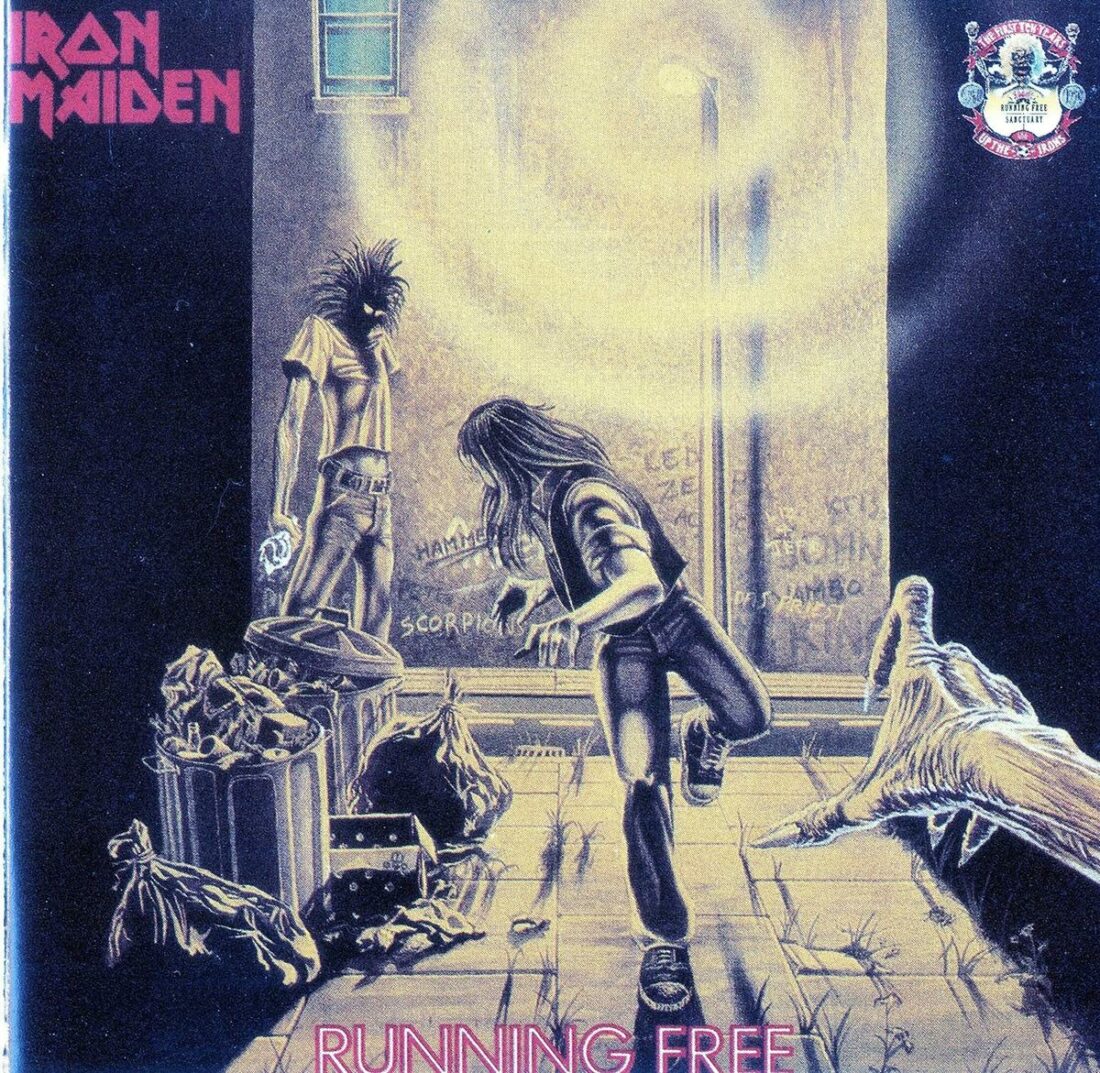
The single “Running Free” marks the debut appearance of Eddie, Iron Maiden‘s now-iconic mascot. Created by artist Derek Riggs, a native of Portsmouth, Eddie’s face is deliberately obscured on the cover to create an air of mystery and anticipation ahead of the band’s self-titled debut album.
Riggs’s artwork features Eddie in a shadowy alley, clutching a broken bottle, with references to rock legends like Led Zeppelin and AC/DC scrawled as graffiti.
18. Pink Floyd – The Dark Side of the Moon

The album cover for Pink Floyd’s “The Dark Side of the Moon” was designed by George Hardie. It shows a glass prism dispersing light into color, a visual representation of the band’s elaborate stage lighting and the album’s rich, complex themes.
The design, described as both “simple and bold” by the band’s Richard Wright, is one of the most recognizable and enduring images in the history of music.
19. David Bowie – Aladdin Sane
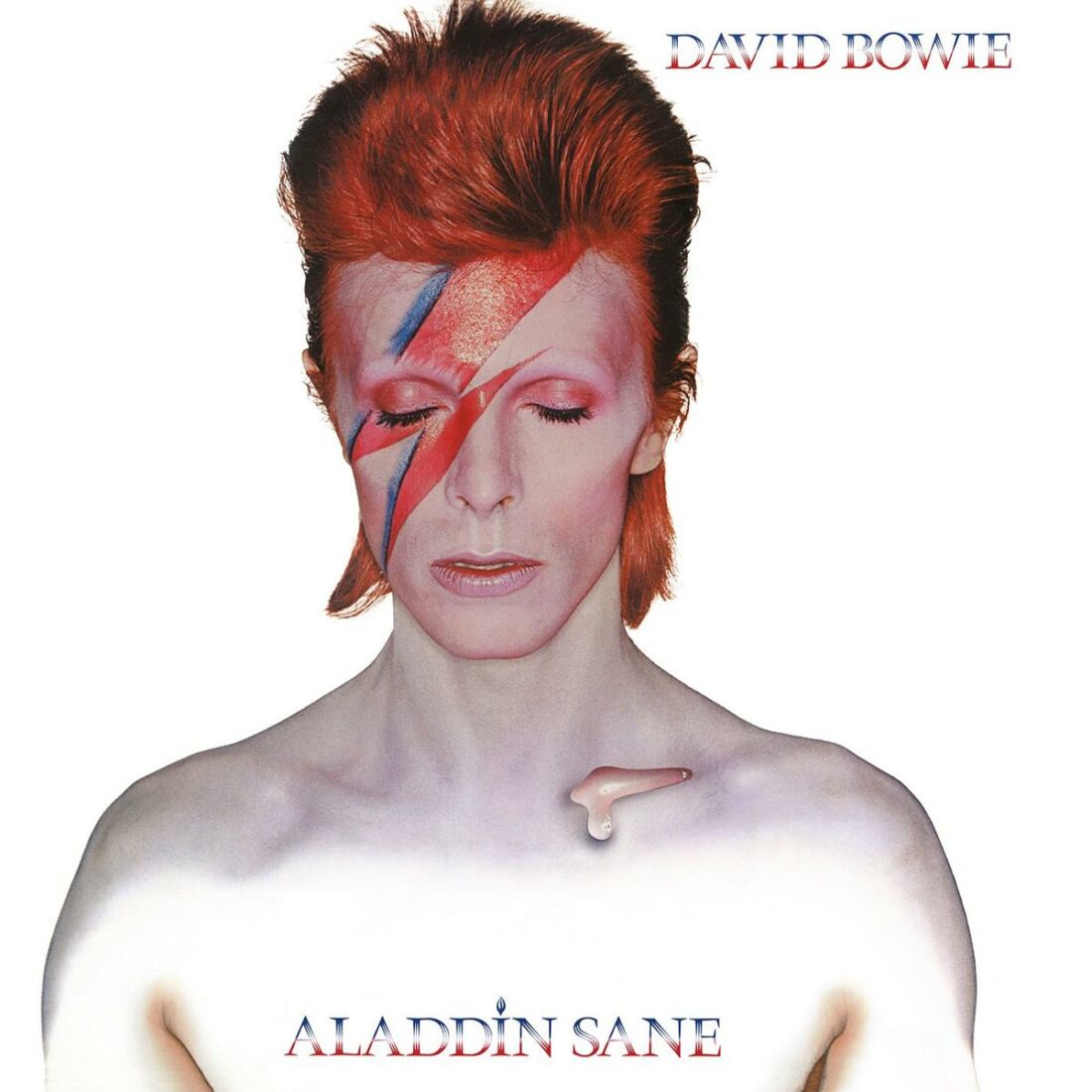
Seared into pop culture, the red-and-blue lightning bolt across David Bowie‘s face is closely associated with his theatrical style and push against conventional limits.
The striking makeup reflected Bowie’s fragmented, larger-than-life “Aladdin Sane” persona. Some people say this is possibly inspired by Elvis’ own lightning bolt jewelry.
This lightning bolt was worn only for a short time during Brian Duffy‘s famous photo shoot. But, this bold appearance helped Bowie redefine contemporary stardom, making it one of the most celebrated images in rock history.
20. Taylor Swift – 1989
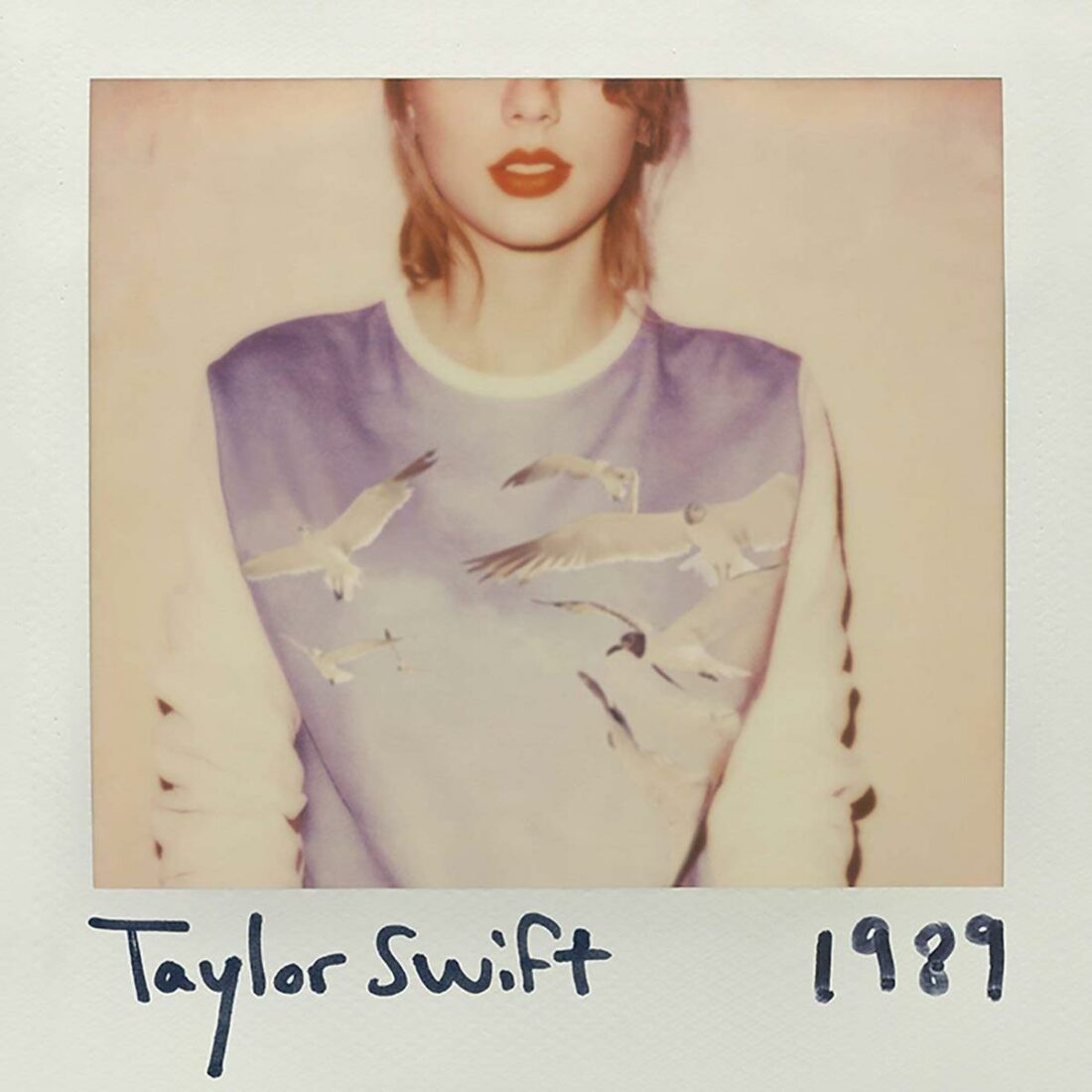
Taylor Swift, as the creative director, chose this 1980s-style photography to reflect her birth decade. The cover shows Swift in a lavender sweatshirt with a seagull design, accented by her red lipstick. Her initials and album title are scribbled in marker, giving it a personal touch.
As the creative director, she purposefully avoided revealing too much to build anticipation. The DIY aesthetic complements 1989’s confident transition into self-assured pop stardom through deeply personal yet universal songwriting.
The album marks a departure from her country roots, embracing a more pop-oriented sound that broadened her appeal.
